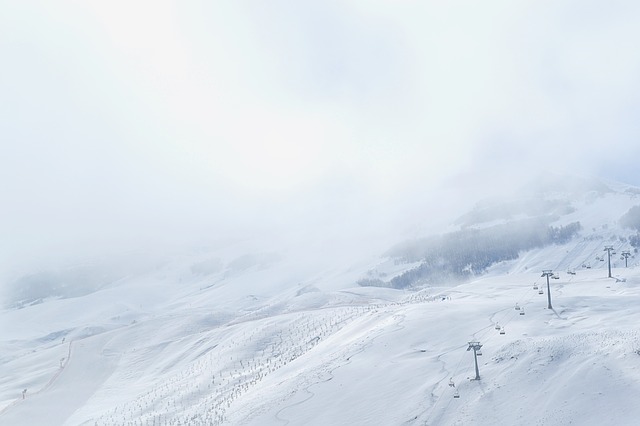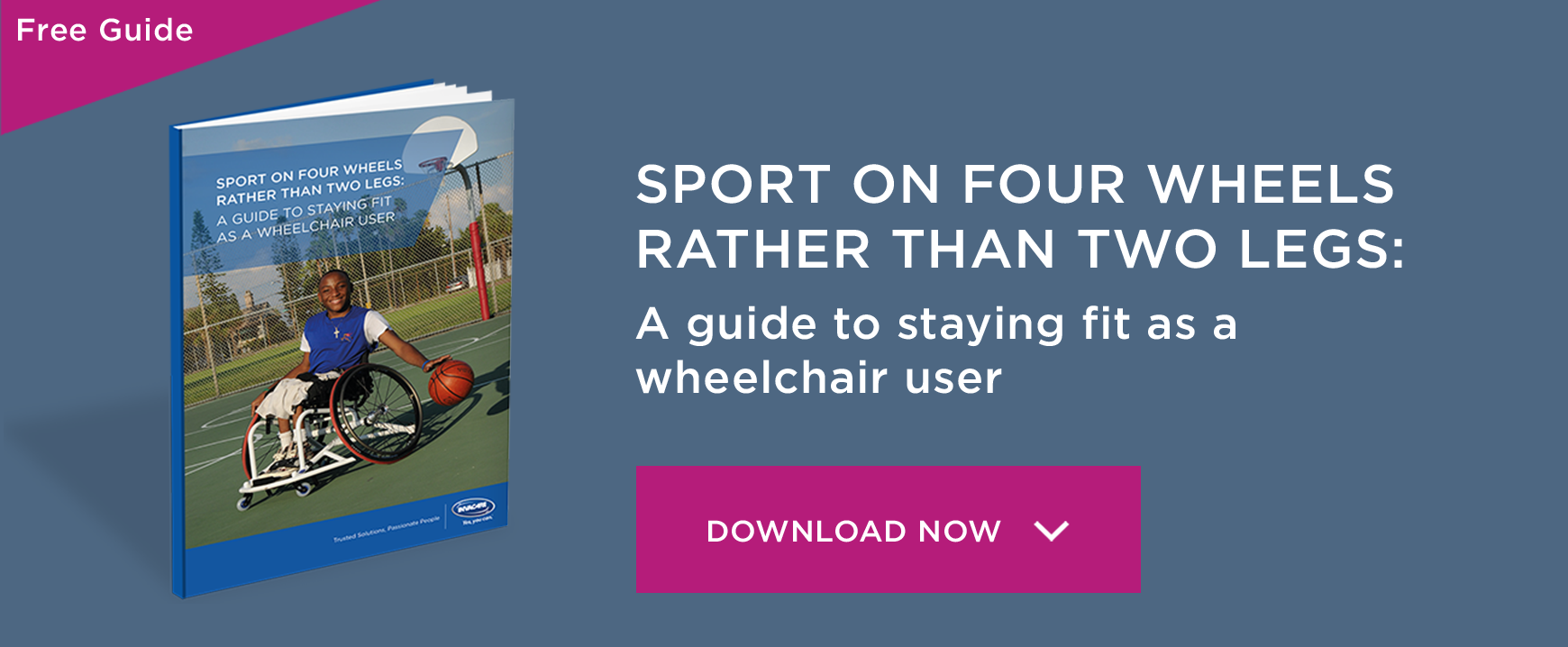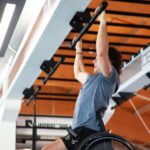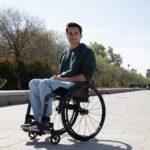Sit ski, mono ski and more: accessible skiing for disabled people

We often hear that disabled people should reach for the skies… but what about reaching for the skis?
With the development of equipment that can be used on snow and ice, the sit ski and the mono ski are enabling wheelchair users and other disabled people to fly down mountains at speed. It’s even a Paralympic winter sport!
Sit skis and mono skis
Sit skis are skis that have a moulded bucket seat suspended above them that the user can sit in. There is a shock absorber below the seat, which makes the ride more comfortable for the user, and the seat is attached to the ski by a sturdy metal frame. Using upper body movements and out rigger skis (gadgets similar to crutches that have a ski attached to the base) attached to the hands, the skier can control the speed and motion of the skis they are travelling on.
Designed for people who are wheelchair users or who have other mobility difficulties or paraplegia, sit skis were initially invented in the 1960s and were custom built each time to suit the person doing the skiing. However, these rigs were heavy and awkward, which prevented their use on certain types of ski slope.
Technology continued to improve, however, and by the 1980s, sit skis were becoming more advanced. Modern sit skis are lighter still and can be used on a wider range of types of slope. They are lighter – whereas earlier sit skis were made from fibreglass and many skiers found it difficult to operate the sit ski without assistance from somebody else.
The skis used within a sit ski set-up are called mono skis. There are different types available, depending on the impairment the skier has, such as paralysis or lower limb amputation. A seat is attached to the mono ski by a spring, and the skier sits in the seat, with a seatbelt for safety.
Other forms of sit skis involve non-disabled skiers skiing upright and manoeuvring a seated disabled person in front of them as they fly across the ice.
Spotlight: sit skier Josh Dueck
Canadian Josh Dueck was a skier before he became disabled but a spinal cord injury sustained during a skiing accident in 2004 led to him becoming paralysed below the waist. Determined to continue in the sport, he began to look into disabled skiing options and came across the sit ski technology he now uses internationally.
Known for achieving the first ever back flip on a sit ski, Dueck has competed around the world in sit ski competitions, including travelling to Sochi for the Winter Paralympic Games.
One of the challenges he has come across is that different sit skis are effective for different disciplines within skiing: some are great for agility, such as slalom races, while others are preferable for stability. With Canada’s Paralympic ski team, he has been working to develop a sit ski that is a great performer in all the disciplines required for Paralympic racing, as well as his show moves like the famous back flip! They are also looking at the design of the seat and the suspension – with every change aimed at improving safety, stability, speed or performance.
Sit skiing in action
No amount of description can be a substitute for seeing these incredible, streamlined gadgets in action with skilled sports people at their helm. This video from Disabled Sports USA will show you that this top speed activity is perfect for any disabled adrenaline junkie looking for a new hobby to get involved in.
If you are interested in getting involved in sit skiing, approach local skiing organisations in your area to see whether they offer sit skiing to members. Alternatively, contact your country’s disabled snow sports organisations to find your closest groups.








